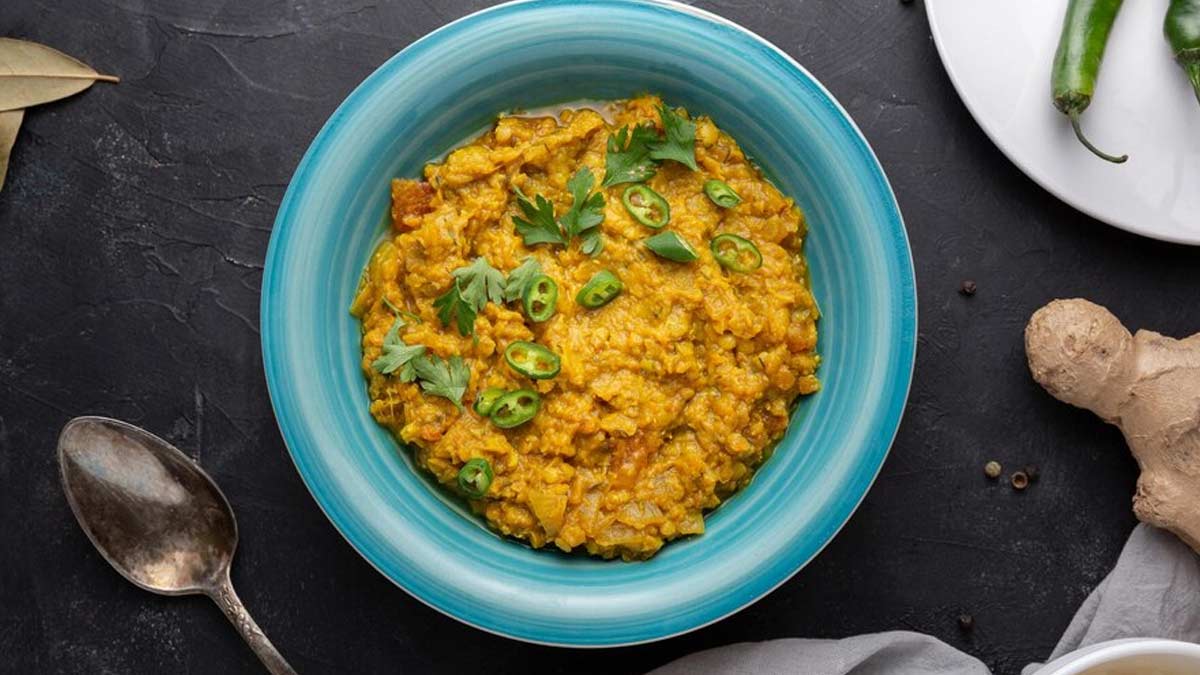
Constipation is a common digestive issue caused by infrequent bowel movements or stools that are difficult to pass. While normal bowel movements can vary from person to person, constipation typically means having fewer than three bowel movements a week. It can also occur with other symptoms, including bloating and cramping.
Table of Content:-
The diet plays a crucial role in preventing and relieving constipation. In India, khichdi is one of the best-cooked meals for constipation. According to Suvarna Sawant (R.D.), Chief Dietician and HOD - Clinical Nutrition and Dietetics, Nanavati Max Superspeciality Hospital, khichdi is a versatile dish that can be beneficial for relieving constipation due to its high fibre content, especially when prepared with whole grains and vegetables.
Let’s find out more about the benefits of khichdi and how well it works in relieving constipation.
Also Read: 7 Reason To Add Lentils In Your Meal
Khichdi For constipation

Khichdi is prepared with a combination of rice and lentils, also known as dal. It provides a balance of carbohydrates and fibre, both of which help maintain overall health.
The fibre in khichdi helps bulk up stool and promote regular bowel movements, while the easily digestible rice allows it to pass smoothly through your digestive system.
Additionally, besides being a comfort food, khichdi provides a range of benefits. It is a great vegetarian source of protein, which helps boost energy. It is also heart-friendly due to the use of minimal oil and healthy fats. Moreover, it is naturally gluten-free, which makes it great for people coping with celiac disease and gluten intolerance.
How To Increase Benefits

If you’re new to khichdi or are used to having it the traditional way with rice and lentils, here’s how you can make the dish better and maximise nutrient benefits.
Whole grains and millets: According to Sawant, traditional khichdi is made with rice and lentils. However, you can substitute rice with other whole grains, such as broken wheat (daliya), oats, quinoa, or millets like bajra, which are higher in fibre compared to rice and aid in regular bowel movements.
Vegetable addition: It is also beneficial to add mixed vegetables to your khichdi to boost its fibre content further, says Sawant, adding that vegetables, such as carrots, peas, beans, and spinach, not only add nutrients but also enhance the dish's fibre content, promoting digestive health.
Also Read: Effects of Overconsumption of Fibre: Expert Shares What Happens When You Eat Too Much Fibre
Dal for protein: The lentils (dal) in khichdi provide a good source of plant-based protein, supporting overall health and well-being. Protein is essential for maintaining muscle mass and other bodily functions.

Other dietary considerations: Sawant says, “While khichdi can be beneficial for constipation, it's also important to include other fibre-rich foods in your diet, such as fresh vegetable salads, whole fruits, green leafy vegetables, and other whole grains.” According to her, these provide a variety of nutrients and further aid in digestion.
Spices and seasonings: Do not forget your spices and seasonings. Certain spices and seasonings, such as cumin, ginger, and turmeric, can be added to khichdi to promote digestive health. These have anti-inflammatory properties and can help soothe the digestive tract.
Conclusion
Khichdi is the answer to almost all digestive problems. Traditionally prepared with rice and lentils, it is a great source of protein, carbohydrates, and fibre, which also aid overall health. If you find it bland, you can always add mild spices and seasonings to amp up the taste. Moreover, mix vegetables to enhance taste and boost nutrition.
Also watch this video
How we keep this article up to date:
We work with experts and keep a close eye on the latest in health and wellness. Whenever there is a new research or helpful information, we update our articles with accurate and useful advice.
Current Version